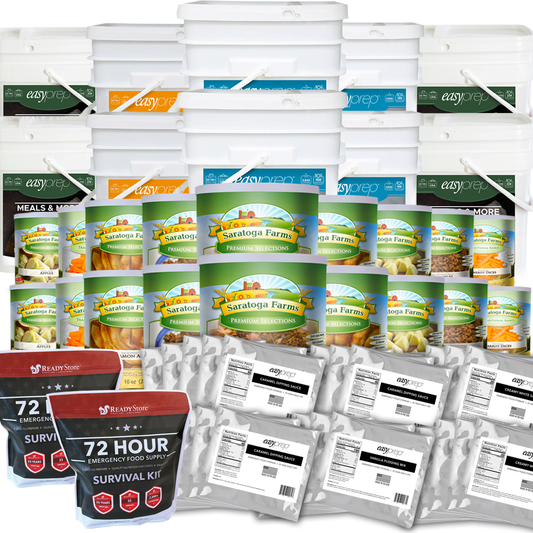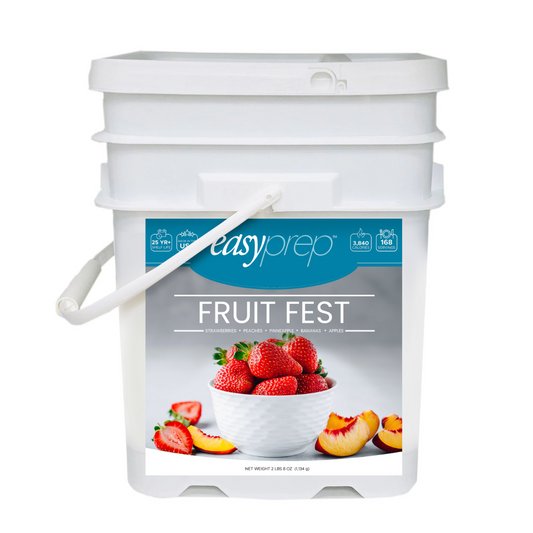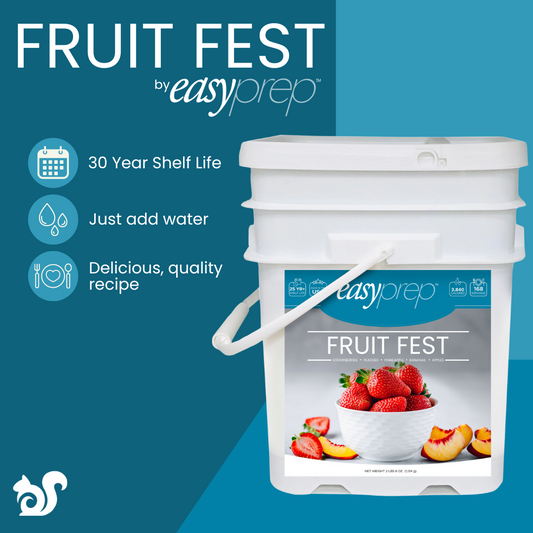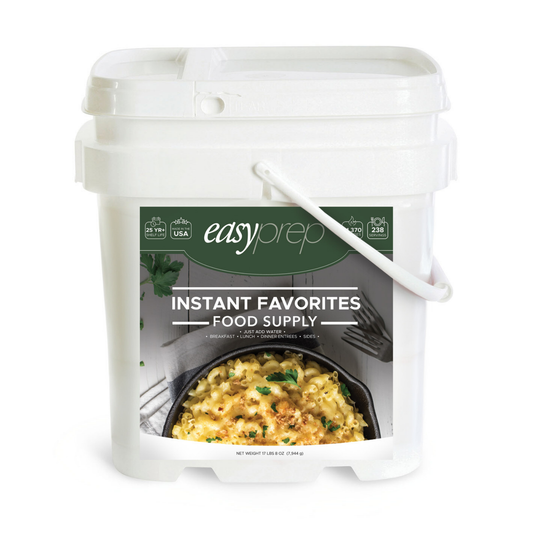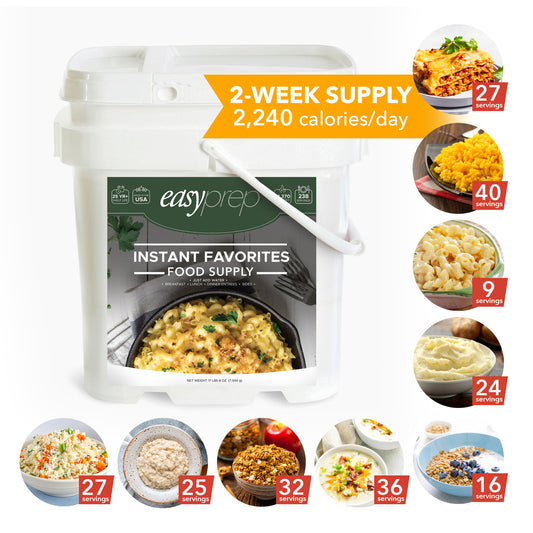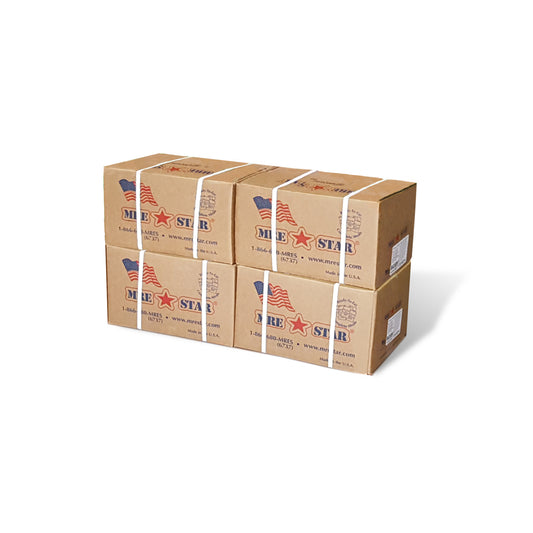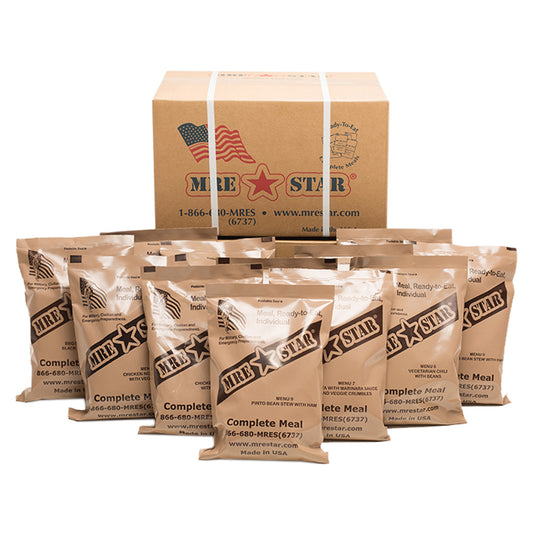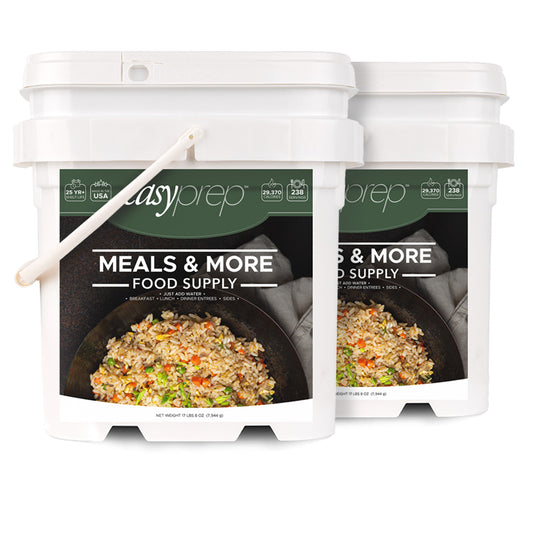10 Wild Edible Plants to Save Your Life
27 Sep 2012
If you were hunting this weekend and got lost, would you know what you could eat? Knowing what plants are edible and which ones are not can be the difference between life and death
Identifying edible plants
The first rule to follow is that if you can’t positively identify a plant, don’t eat it. A plant could be poisonous and if you identify it incorrectly, that could be a bad end.
To complicate things, some plants are fine to eat when they are young but become poisonous later on in their growth. Some plants are poisonous during certain seasons. Others just have certain parts of the plants that are poisonous.
While some of the plants below will not fit these descriptions, as a general rule of thumb, avoid plants that have:
 Asparagus
Wild asparagus is common in many parts of North America, Europe and West Asia. It is very similar to asparagus that you find in your grocery store but has a lot thinner stalk. It typically resembles a cluster of green fingers. The mature plant is fern-like with red berries. The plant's flowers are small and green in color. Wild asparagus is most common between March and June. It is a great source of Vitamin C, thiamine and potassium. You can eat it raw or boil it. You'll most likely find it along ditches, fields, fences or at the base of ferns.[1]
Asparagus
Wild asparagus is common in many parts of North America, Europe and West Asia. It is very similar to asparagus that you find in your grocery store but has a lot thinner stalk. It typically resembles a cluster of green fingers. The mature plant is fern-like with red berries. The plant's flowers are small and green in color. Wild asparagus is most common between March and June. It is a great source of Vitamin C, thiamine and potassium. You can eat it raw or boil it. You'll most likely find it along ditches, fields, fences or at the base of ferns.[1]
 Cattail
These plants are known as cattails or punks in North America. They are known as bullrush or reedmace in Europe. They are typically found near freshwater rivers and ponds. They are tall plants that have a brown or bright yellow hot dog-shaped flower on the end. Most of the plant itself is edible. The best part of the plant is the stem near the bottom where the stalk is white. You can boil or eat them stem raw. Boil the leaves to eat them. If you want to eat the hot dog-looking part of the plant, you need to get it at the right time. The roots specifically, are very good sources of Vitamins A and B[2]
Cattail
These plants are known as cattails or punks in North America. They are known as bullrush or reedmace in Europe. They are typically found near freshwater rivers and ponds. They are tall plants that have a brown or bright yellow hot dog-shaped flower on the end. Most of the plant itself is edible. The best part of the plant is the stem near the bottom where the stalk is white. You can boil or eat them stem raw. Boil the leaves to eat them. If you want to eat the hot dog-looking part of the plant, you need to get it at the right time. The roots specifically, are very good sources of Vitamins A and B[2]
 Clovers
Lucky for you, clovers are edible! They are typically found in an open grassy area and are better when boiled. It's best to eat the blossoms, but don't eat the brown blossoms. You'll want young and fresh white, pink or red ones. The leaves are also edible however, you'll want to look for young ones. The younger leaves are digestible raw in small amounts - half a cup or so. Older leaves will need to be cooked.[3] You should be warned too that you'll never want to eat fermented clover leaves and clovers in warm climates can produce small amounts of cyanide so be careful.[4]
Clovers
Lucky for you, clovers are edible! They are typically found in an open grassy area and are better when boiled. It's best to eat the blossoms, but don't eat the brown blossoms. You'll want young and fresh white, pink or red ones. The leaves are also edible however, you'll want to look for young ones. The younger leaves are digestible raw in small amounts - half a cup or so. Older leaves will need to be cooked.[3] You should be warned too that you'll never want to eat fermented clover leaves and clovers in warm climates can produce small amounts of cyanide so be careful.[4]
 Chickweed
The chickweed is most common in temperate and arctic zones. The leaves are pretty thick and usually have small white flowers on the head. They are most common between May and July. Chickweed is very high in many vitamins and minerals. You can eat the leaves raw or boiled. The chickweed has a poisonous look-alike called spotted spurge. It grows close to the ground and can can even grow side by side with chickweed. Spurge exudes an acrid, white, milky sap when the leaves are cut. Chickweed does not.[5]
Chickweed
The chickweed is most common in temperate and arctic zones. The leaves are pretty thick and usually have small white flowers on the head. They are most common between May and July. Chickweed is very high in many vitamins and minerals. You can eat the leaves raw or boiled. The chickweed has a poisonous look-alike called spotted spurge. It grows close to the ground and can can even grow side by side with chickweed. Spurge exudes an acrid, white, milky sap when the leaves are cut. Chickweed does not.[5]
 Dandelion
It should be pretty easy to identify dandelions. They are the ones that keep popping up in your perfect lawn! Your kids use them to draw with. Dandelion leaves have jagged edges, grow close to the ground and typically grow in bright areas. The great thing about them though is that they are entirely edible. You can eat the leaves while they are still young. The mature leaves aren’t bad but they will taste bitter. To get rid of the bitter taste, you can boil the leaves. You can also boil the roots before eating. You can also drink the water after you boil it.[6]
Dandelion
It should be pretty easy to identify dandelions. They are the ones that keep popping up in your perfect lawn! Your kids use them to draw with. Dandelion leaves have jagged edges, grow close to the ground and typically grow in bright areas. The great thing about them though is that they are entirely edible. You can eat the leaves while they are still young. The mature leaves aren’t bad but they will taste bitter. To get rid of the bitter taste, you can boil the leaves. You can also boil the roots before eating. You can also drink the water after you boil it.[6]
 Fireweed
Fireweed is a pretty purple and pink plant that is common in the Northern Hemisphere. It can also be identified by its unique structure of the leaf's veins. The veins are circular instead of ending at the edge of the leaf. It’s better to eat younger fireweed plants. Mature fireweed is a lot tougher and more bitter. You can eat the stalk of the leaves. The flower and the seeds have a pepper taste.[7]
Fireweed
Fireweed is a pretty purple and pink plant that is common in the Northern Hemisphere. It can also be identified by its unique structure of the leaf's veins. The veins are circular instead of ending at the edge of the leaf. It’s better to eat younger fireweed plants. Mature fireweed is a lot tougher and more bitter. You can eat the stalk of the leaves. The flower and the seeds have a pepper taste.[7]
 Green Seaweed
If you are trapped on a deserted island, seaweed might be your best friend. Seaweed is found in oceans around the world and is very common. After you pull the seaweed from the water, rinse it with fresh water and let it dry out. You can eat the seaweed raw or even include it in some type of soup.
Green Seaweed
If you are trapped on a deserted island, seaweed might be your best friend. Seaweed is found in oceans around the world and is very common. After you pull the seaweed from the water, rinse it with fresh water and let it dry out. You can eat the seaweed raw or even include it in some type of soup.
 Plantain
Not to be confused with the banana-like plant, the plantain plant has large spinach-like leaves. You can usually find plantain plants near marshes and bogs. They also tend to sprout up in alpine areas. The leaves tend to grow close to the ground, be large, oval and ribbed. They will also be short-stemmed. The leaves tend to grow 4 to 6 inches wide. Like many plants, the leaves are better the younger they are. Upon maturing, they grow more bitter.[8]
Plantain
Not to be confused with the banana-like plant, the plantain plant has large spinach-like leaves. You can usually find plantain plants near marshes and bogs. They also tend to sprout up in alpine areas. The leaves tend to grow close to the ground, be large, oval and ribbed. They will also be short-stemmed. The leaves tend to grow 4 to 6 inches wide. Like many plants, the leaves are better the younger they are. Upon maturing, they grow more bitter.[8]
 Prickly Pear Cactus
This “Bear Necessity” of Baloo the bear in “The Jungle Book,” is most commonly found in the deserts of North America. It has a great taste and is very nutritional. The fruit of the prickly cactus is typically red or purple. Before you eat the plant, remove the small spines on the outer skin. You can also eat the stem of the prickly pear cactus if the plant is younger.[9]
Prickly Pear Cactus
This “Bear Necessity” of Baloo the bear in “The Jungle Book,” is most commonly found in the deserts of North America. It has a great taste and is very nutritional. The fruit of the prickly cactus is typically red or purple. Before you eat the plant, remove the small spines on the outer skin. You can also eat the stem of the prickly pear cactus if the plant is younger.[9]
 Elderberry
Elderberry is most commonly found in wet areas like marshes, rivers, ditches and lakes. They are very common in North America primarily the eastern United States. You can identify elderberry by it’s many stems. It has a compound leaf and grows about 20 feet high. It’s flowers are very fragrant, white and grow in flat-topped clusters.Most agree that they do need to be cooked if you are going to eat more than just a few out of hand. That’s because they have a small amount of cyanide producing glycosides, which are released upon digestion, but so do loquats. Professor Julia Morton says the fully ripe black berries are not toxic and you can eat as many as you like.[10]
What others do you know of?
We’ve only listed 10 weeds that you can eat. There are countless books about edible plants and other self-sufficiency guides. What others do you know of? Comment below to share your wealth of knowledge.
Sources:
[1] "Cooking with Wild Edbiles. Now Spear This: Wild Asparagus" Organic Valley Family of Farms. Retrieved from www.organicvalley.coop/recipes/features/wild-edibles/now-spear-this-wild-asparagus on 7/14/14.
[2] Deane, Green. "Cattails - A Survival Dinner" Eat the Weeds. Retrieved from www.eattheweeds.com/cattails-a-survival-dinner on 7/14/14.
[3] Deane, Green. "Clover, Available Around the World" Eat the Weeds. Retrieved from www.eattheweeds.com/clover-available-around-the-world-2 on 7/14/14
[4] Washington University in St. Louis. (2007, October 4). Genetic Differences In Clover Make One Type Toxic. ScienceDaily. Retrieved July 14, 2014 from www.sciencedaily.com/releases/2007/10/071001151308.htm
[5] Brill, Steve. "Edible Chickweed: Here Chicky, Chicky, Chickweed" Retrieved www.hgtvgardens.com/foraging/wild-man-here-chicky-chicky-chickweed on 7/14/14
[6] Breyer, Melissa. 2011. "Eating Dandelions" Retrieved from www.care2.com/greenliving/eating-dandelions.html on 7/14/14
[7] Constantino, Laurie. 2008. "How to Harvest and Use Fireweed Shoots" Retrieved from www.laurieconstantino.com/how-to-use-and-harvest-fireweed-shoots/ on 7/14/14
[8] McDougall, Len. 2011. "Plantain: A Weed You Can Eat" April/May edition of 2011 Mother Earth News. Online edition available here: https://www.motherearthnews.com/homesteading-and-livestock/common-plantain-zm0z11zhun.aspx
[9] McCord, Garrett. 2008. "How to Cut and Prepare Prickly Pears" Retrieved from www.simplyrecipes.com/recipes/how_to_cut_and_prepare_prickly_pears on 7/14/14
[10] Deane, Green. "Elderberries: Red, White and Blue" Retrieved from www.eattheweeds.com/elderberries-red-white-and-blue on 7/14/14
Elderberry
Elderberry is most commonly found in wet areas like marshes, rivers, ditches and lakes. They are very common in North America primarily the eastern United States. You can identify elderberry by it’s many stems. It has a compound leaf and grows about 20 feet high. It’s flowers are very fragrant, white and grow in flat-topped clusters.Most agree that they do need to be cooked if you are going to eat more than just a few out of hand. That’s because they have a small amount of cyanide producing glycosides, which are released upon digestion, but so do loquats. Professor Julia Morton says the fully ripe black berries are not toxic and you can eat as many as you like.[10]
What others do you know of?
We’ve only listed 10 weeds that you can eat. There are countless books about edible plants and other self-sufficiency guides. What others do you know of? Comment below to share your wealth of knowledge.
Sources:
[1] "Cooking with Wild Edbiles. Now Spear This: Wild Asparagus" Organic Valley Family of Farms. Retrieved from www.organicvalley.coop/recipes/features/wild-edibles/now-spear-this-wild-asparagus on 7/14/14.
[2] Deane, Green. "Cattails - A Survival Dinner" Eat the Weeds. Retrieved from www.eattheweeds.com/cattails-a-survival-dinner on 7/14/14.
[3] Deane, Green. "Clover, Available Around the World" Eat the Weeds. Retrieved from www.eattheweeds.com/clover-available-around-the-world-2 on 7/14/14
[4] Washington University in St. Louis. (2007, October 4). Genetic Differences In Clover Make One Type Toxic. ScienceDaily. Retrieved July 14, 2014 from www.sciencedaily.com/releases/2007/10/071001151308.htm
[5] Brill, Steve. "Edible Chickweed: Here Chicky, Chicky, Chickweed" Retrieved www.hgtvgardens.com/foraging/wild-man-here-chicky-chicky-chickweed on 7/14/14
[6] Breyer, Melissa. 2011. "Eating Dandelions" Retrieved from www.care2.com/greenliving/eating-dandelions.html on 7/14/14
[7] Constantino, Laurie. 2008. "How to Harvest and Use Fireweed Shoots" Retrieved from www.laurieconstantino.com/how-to-use-and-harvest-fireweed-shoots/ on 7/14/14
[8] McDougall, Len. 2011. "Plantain: A Weed You Can Eat" April/May edition of 2011 Mother Earth News. Online edition available here: https://www.motherearthnews.com/homesteading-and-livestock/common-plantain-zm0z11zhun.aspx
[9] McCord, Garrett. 2008. "How to Cut and Prepare Prickly Pears" Retrieved from www.simplyrecipes.com/recipes/how_to_cut_and_prepare_prickly_pears on 7/14/14
[10] Deane, Green. "Elderberries: Red, White and Blue" Retrieved from www.eattheweeds.com/elderberries-red-white-and-blue on 7/14/14
• milky sap
• spines, fine hairs or thorns
• beans, bulbs or seeds inside the pod
• a grainy head with pink, purple or black spurs
• a three-leaf growing pattern
Where to find edible plants
If you are in a humid region, most of the plants will be in sunny areas. If you are in a dry region, the majority of the plants will be found near water sources.
It’s a good idea to locate a local plant guidebook and familiarize yourself with it before you go out. You might also consider making it a part of your pack.
 Asparagus
Wild asparagus is common in many parts of North America, Europe and West Asia. It is very similar to asparagus that you find in your grocery store but has a lot thinner stalk. It typically resembles a cluster of green fingers. The mature plant is fern-like with red berries. The plant's flowers are small and green in color. Wild asparagus is most common between March and June. It is a great source of Vitamin C, thiamine and potassium. You can eat it raw or boil it. You'll most likely find it along ditches, fields, fences or at the base of ferns.[1]
Asparagus
Wild asparagus is common in many parts of North America, Europe and West Asia. It is very similar to asparagus that you find in your grocery store but has a lot thinner stalk. It typically resembles a cluster of green fingers. The mature plant is fern-like with red berries. The plant's flowers are small and green in color. Wild asparagus is most common between March and June. It is a great source of Vitamin C, thiamine and potassium. You can eat it raw or boil it. You'll most likely find it along ditches, fields, fences or at the base of ferns.[1]
 Cattail
These plants are known as cattails or punks in North America. They are known as bullrush or reedmace in Europe. They are typically found near freshwater rivers and ponds. They are tall plants that have a brown or bright yellow hot dog-shaped flower on the end. Most of the plant itself is edible. The best part of the plant is the stem near the bottom where the stalk is white. You can boil or eat them stem raw. Boil the leaves to eat them. If you want to eat the hot dog-looking part of the plant, you need to get it at the right time. The roots specifically, are very good sources of Vitamins A and B[2]
Cattail
These plants are known as cattails or punks in North America. They are known as bullrush or reedmace in Europe. They are typically found near freshwater rivers and ponds. They are tall plants that have a brown or bright yellow hot dog-shaped flower on the end. Most of the plant itself is edible. The best part of the plant is the stem near the bottom where the stalk is white. You can boil or eat them stem raw. Boil the leaves to eat them. If you want to eat the hot dog-looking part of the plant, you need to get it at the right time. The roots specifically, are very good sources of Vitamins A and B[2]
 Clovers
Lucky for you, clovers are edible! They are typically found in an open grassy area and are better when boiled. It's best to eat the blossoms, but don't eat the brown blossoms. You'll want young and fresh white, pink or red ones. The leaves are also edible however, you'll want to look for young ones. The younger leaves are digestible raw in small amounts - half a cup or so. Older leaves will need to be cooked.[3] You should be warned too that you'll never want to eat fermented clover leaves and clovers in warm climates can produce small amounts of cyanide so be careful.[4]
Clovers
Lucky for you, clovers are edible! They are typically found in an open grassy area and are better when boiled. It's best to eat the blossoms, but don't eat the brown blossoms. You'll want young and fresh white, pink or red ones. The leaves are also edible however, you'll want to look for young ones. The younger leaves are digestible raw in small amounts - half a cup or so. Older leaves will need to be cooked.[3] You should be warned too that you'll never want to eat fermented clover leaves and clovers in warm climates can produce small amounts of cyanide so be careful.[4]
 Chickweed
The chickweed is most common in temperate and arctic zones. The leaves are pretty thick and usually have small white flowers on the head. They are most common between May and July. Chickweed is very high in many vitamins and minerals. You can eat the leaves raw or boiled. The chickweed has a poisonous look-alike called spotted spurge. It grows close to the ground and can can even grow side by side with chickweed. Spurge exudes an acrid, white, milky sap when the leaves are cut. Chickweed does not.[5]
Chickweed
The chickweed is most common in temperate and arctic zones. The leaves are pretty thick and usually have small white flowers on the head. They are most common between May and July. Chickweed is very high in many vitamins and minerals. You can eat the leaves raw or boiled. The chickweed has a poisonous look-alike called spotted spurge. It grows close to the ground and can can even grow side by side with chickweed. Spurge exudes an acrid, white, milky sap when the leaves are cut. Chickweed does not.[5]
 Dandelion
It should be pretty easy to identify dandelions. They are the ones that keep popping up in your perfect lawn! Your kids use them to draw with. Dandelion leaves have jagged edges, grow close to the ground and typically grow in bright areas. The great thing about them though is that they are entirely edible. You can eat the leaves while they are still young. The mature leaves aren’t bad but they will taste bitter. To get rid of the bitter taste, you can boil the leaves. You can also boil the roots before eating. You can also drink the water after you boil it.[6]
Dandelion
It should be pretty easy to identify dandelions. They are the ones that keep popping up in your perfect lawn! Your kids use them to draw with. Dandelion leaves have jagged edges, grow close to the ground and typically grow in bright areas. The great thing about them though is that they are entirely edible. You can eat the leaves while they are still young. The mature leaves aren’t bad but they will taste bitter. To get rid of the bitter taste, you can boil the leaves. You can also boil the roots before eating. You can also drink the water after you boil it.[6]
 Fireweed
Fireweed is a pretty purple and pink plant that is common in the Northern Hemisphere. It can also be identified by its unique structure of the leaf's veins. The veins are circular instead of ending at the edge of the leaf. It’s better to eat younger fireweed plants. Mature fireweed is a lot tougher and more bitter. You can eat the stalk of the leaves. The flower and the seeds have a pepper taste.[7]
Fireweed
Fireweed is a pretty purple and pink plant that is common in the Northern Hemisphere. It can also be identified by its unique structure of the leaf's veins. The veins are circular instead of ending at the edge of the leaf. It’s better to eat younger fireweed plants. Mature fireweed is a lot tougher and more bitter. You can eat the stalk of the leaves. The flower and the seeds have a pepper taste.[7]
 Green Seaweed
If you are trapped on a deserted island, seaweed might be your best friend. Seaweed is found in oceans around the world and is very common. After you pull the seaweed from the water, rinse it with fresh water and let it dry out. You can eat the seaweed raw or even include it in some type of soup.
Green Seaweed
If you are trapped on a deserted island, seaweed might be your best friend. Seaweed is found in oceans around the world and is very common. After you pull the seaweed from the water, rinse it with fresh water and let it dry out. You can eat the seaweed raw or even include it in some type of soup.
 Plantain
Not to be confused with the banana-like plant, the plantain plant has large spinach-like leaves. You can usually find plantain plants near marshes and bogs. They also tend to sprout up in alpine areas. The leaves tend to grow close to the ground, be large, oval and ribbed. They will also be short-stemmed. The leaves tend to grow 4 to 6 inches wide. Like many plants, the leaves are better the younger they are. Upon maturing, they grow more bitter.[8]
Plantain
Not to be confused with the banana-like plant, the plantain plant has large spinach-like leaves. You can usually find plantain plants near marshes and bogs. They also tend to sprout up in alpine areas. The leaves tend to grow close to the ground, be large, oval and ribbed. They will also be short-stemmed. The leaves tend to grow 4 to 6 inches wide. Like many plants, the leaves are better the younger they are. Upon maturing, they grow more bitter.[8]
 Prickly Pear Cactus
This “Bear Necessity” of Baloo the bear in “The Jungle Book,” is most commonly found in the deserts of North America. It has a great taste and is very nutritional. The fruit of the prickly cactus is typically red or purple. Before you eat the plant, remove the small spines on the outer skin. You can also eat the stem of the prickly pear cactus if the plant is younger.[9]
Prickly Pear Cactus
This “Bear Necessity” of Baloo the bear in “The Jungle Book,” is most commonly found in the deserts of North America. It has a great taste and is very nutritional. The fruit of the prickly cactus is typically red or purple. Before you eat the plant, remove the small spines on the outer skin. You can also eat the stem of the prickly pear cactus if the plant is younger.[9]
 Elderberry
Elderberry is most commonly found in wet areas like marshes, rivers, ditches and lakes. They are very common in North America primarily the eastern United States. You can identify elderberry by it’s many stems. It has a compound leaf and grows about 20 feet high. It’s flowers are very fragrant, white and grow in flat-topped clusters.Most agree that they do need to be cooked if you are going to eat more than just a few out of hand. That’s because they have a small amount of cyanide producing glycosides, which are released upon digestion, but so do loquats. Professor Julia Morton says the fully ripe black berries are not toxic and you can eat as many as you like.[10]
What others do you know of?
We’ve only listed 10 weeds that you can eat. There are countless books about edible plants and other self-sufficiency guides. What others do you know of? Comment below to share your wealth of knowledge.
Sources:
[1] "Cooking with Wild Edbiles. Now Spear This: Wild Asparagus" Organic Valley Family of Farms. Retrieved from www.organicvalley.coop/recipes/features/wild-edibles/now-spear-this-wild-asparagus on 7/14/14.
[2] Deane, Green. "Cattails - A Survival Dinner" Eat the Weeds. Retrieved from www.eattheweeds.com/cattails-a-survival-dinner on 7/14/14.
[3] Deane, Green. "Clover, Available Around the World" Eat the Weeds. Retrieved from www.eattheweeds.com/clover-available-around-the-world-2 on 7/14/14
[4] Washington University in St. Louis. (2007, October 4). Genetic Differences In Clover Make One Type Toxic. ScienceDaily. Retrieved July 14, 2014 from www.sciencedaily.com/releases/2007/10/071001151308.htm
[5] Brill, Steve. "Edible Chickweed: Here Chicky, Chicky, Chickweed" Retrieved www.hgtvgardens.com/foraging/wild-man-here-chicky-chicky-chickweed on 7/14/14
[6] Breyer, Melissa. 2011. "Eating Dandelions" Retrieved from www.care2.com/greenliving/eating-dandelions.html on 7/14/14
[7] Constantino, Laurie. 2008. "How to Harvest and Use Fireweed Shoots" Retrieved from www.laurieconstantino.com/how-to-use-and-harvest-fireweed-shoots/ on 7/14/14
[8] McDougall, Len. 2011. "Plantain: A Weed You Can Eat" April/May edition of 2011 Mother Earth News. Online edition available here: https://www.motherearthnews.com/homesteading-and-livestock/common-plantain-zm0z11zhun.aspx
[9] McCord, Garrett. 2008. "How to Cut and Prepare Prickly Pears" Retrieved from www.simplyrecipes.com/recipes/how_to_cut_and_prepare_prickly_pears on 7/14/14
[10] Deane, Green. "Elderberries: Red, White and Blue" Retrieved from www.eattheweeds.com/elderberries-red-white-and-blue on 7/14/14
Elderberry
Elderberry is most commonly found in wet areas like marshes, rivers, ditches and lakes. They are very common in North America primarily the eastern United States. You can identify elderberry by it’s many stems. It has a compound leaf and grows about 20 feet high. It’s flowers are very fragrant, white and grow in flat-topped clusters.Most agree that they do need to be cooked if you are going to eat more than just a few out of hand. That’s because they have a small amount of cyanide producing glycosides, which are released upon digestion, but so do loquats. Professor Julia Morton says the fully ripe black berries are not toxic and you can eat as many as you like.[10]
What others do you know of?
We’ve only listed 10 weeds that you can eat. There are countless books about edible plants and other self-sufficiency guides. What others do you know of? Comment below to share your wealth of knowledge.
Sources:
[1] "Cooking with Wild Edbiles. Now Spear This: Wild Asparagus" Organic Valley Family of Farms. Retrieved from www.organicvalley.coop/recipes/features/wild-edibles/now-spear-this-wild-asparagus on 7/14/14.
[2] Deane, Green. "Cattails - A Survival Dinner" Eat the Weeds. Retrieved from www.eattheweeds.com/cattails-a-survival-dinner on 7/14/14.
[3] Deane, Green. "Clover, Available Around the World" Eat the Weeds. Retrieved from www.eattheweeds.com/clover-available-around-the-world-2 on 7/14/14
[4] Washington University in St. Louis. (2007, October 4). Genetic Differences In Clover Make One Type Toxic. ScienceDaily. Retrieved July 14, 2014 from www.sciencedaily.com/releases/2007/10/071001151308.htm
[5] Brill, Steve. "Edible Chickweed: Here Chicky, Chicky, Chickweed" Retrieved www.hgtvgardens.com/foraging/wild-man-here-chicky-chicky-chickweed on 7/14/14
[6] Breyer, Melissa. 2011. "Eating Dandelions" Retrieved from www.care2.com/greenliving/eating-dandelions.html on 7/14/14
[7] Constantino, Laurie. 2008. "How to Harvest and Use Fireweed Shoots" Retrieved from www.laurieconstantino.com/how-to-use-and-harvest-fireweed-shoots/ on 7/14/14
[8] McDougall, Len. 2011. "Plantain: A Weed You Can Eat" April/May edition of 2011 Mother Earth News. Online edition available here: https://www.motherearthnews.com/homesteading-and-livestock/common-plantain-zm0z11zhun.aspx
[9] McCord, Garrett. 2008. "How to Cut and Prepare Prickly Pears" Retrieved from www.simplyrecipes.com/recipes/how_to_cut_and_prepare_prickly_pears on 7/14/14
[10] Deane, Green. "Elderberries: Red, White and Blue" Retrieved from www.eattheweeds.com/elderberries-red-white-and-blue on 7/14/14


